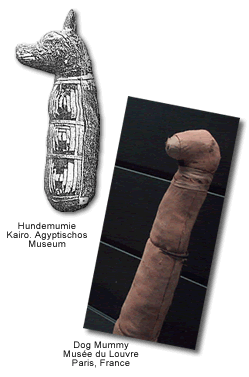
The royal dog of Egypt, the Saluki, may be as old as the oldest known civilization. Historians have identified it as a distinct breed and type as long ago as 329 B.C. when Alexander the Great invaded India. |
 |
|
|
Hounds shown on the earliest carvings from the earliest known civilizations look more like Salukis than any other breed: they have a Greyhound body with feathered ears, tail, and legs. Exactly the same hound appears on the Egyptian tombs of 2100 B.C. and more recent excavations of the still older Sumerian empire, estimated at 7000-6000 B.C., have produced carvings of striking resemblance to the Saluki. The name Saluki is derived from the ancient city of Saluk in Iraq southeast of Baghdad. The breed has a number of names throughout the Gulf - e.g., Tazi in Persia Sloughi in North Africa (Morocco), Azawakh in Mali and other parts of Africa, Salaq in the southwest of the Arabian Peninsula in Yemen, and in Armenia to the west of the Caspian Sea. |
||||
|
As the desert tribes are nomadic, the habitat of the Saluki comprised all the region stretching from the Caspian Sea to the Sahara, including Egypt, Arabia, Palestine, Syria, Mesopotamia, Anatholia and Persia. The types varied mostly in size and coat. The Arabian-bred Saluki is of a smaller type with less feathering on the legs and ears than the Persian variety.
|
|||||
 |
|||||
|
|||||
|
Having tremendous speed, the Saluki is a brilliant desert hunter capable of incredible agility over rough terrain. He was used to course and bring down the gazelle, the fastest of the antelopes. It is recorded that the Pharaohs rode to the chase with their hawks on their wrists and Salukis on the lead. It is also believed the Saluki was used on jackals, foxes, and hares. Salukis were first brought into England in 1840: a bitch owned by Sir Hamilton Smith, a dog in Regents Park Zoological Gardens, and one owned by the Duke of Devonshire at Chatsworth. They were then known as Persian greyhounds since these three came from Persia. During World War I English Army officers stationed in the East brought other specimens home as either prizes of war or the gifts of friendly tribes.
|
On his native heath the Saluki gets no pampering. He lives hard, and it is a case of survival of the fittest--one reason for his strong constitution and sturdy frame, enabling him to stand any cimate in unheated kennels. His feet are hard and firm, and the hair between the toes is a great protection. In all his running and dodging over the roughest kind of ground and rocky country, he never damages pads or toes. |
||||
|
His beauty is that of the thoroughbred horse: grace and symmetry of form; clean-cut and graceful; short silky hair except on the ears, legs, and tail; slender, well-muscled neck, shoulders, and thighs; arched loins; long tail carried naturally in a curve with silky hair hanging from the underside; the arched toes; the rather long head with deep, far-seeing eyes--an expression of dignity mixed with gentleness.
|
|||||